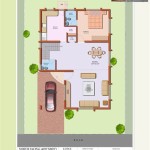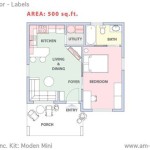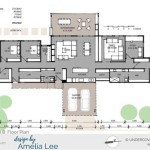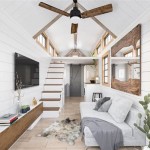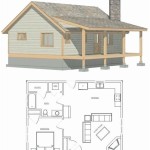Tuscan House Designs and Floor Plans
Tuscan-style homes evoke the warmth and rustic charm of the Italian countryside. Characterized by their Old-World aesthetic, these houses incorporate specific architectural elements and design principles that create a timeless appeal. Understanding these core features helps in identifying and appreciating the nuances of Tuscan house designs and floor plans.
Exterior features play a significant role in defining a Tuscan house. Common materials include stucco, stone, and brick, often combined to create a textured and layered appearance. Stucco walls, typically in warm earth tones like ochre, terracotta, or cream, provide a smooth backdrop against rough-hewn stone accents. Exposed stone or brick is frequently used for foundational elements, archways, and chimneys. Roofs are generally low-pitched with clay tiles, further enhancing the rustic aesthetic.
Architectural details add character and authenticity. Arched doorways and windows are a hallmark of Tuscan design, echoing the Romanesque influences of the region. Wrought iron accents, such as balconies, railings, and window grilles, provide decorative flourishes. Heavy wooden doors contribute to the sense of solidity and history. Shutters, often painted in contrasting colors, add functionality and visual interest.
Tuscan floor plans prioritize open and inviting spaces for gathering and entertaining. The central courtyard, or cortile, is a traditional element, providing a private outdoor area for relaxation and dining. Great rooms with high ceilings and exposed beams create a sense of grandeur and spaciousness. Kitchens are often designed as the heart of the home, featuring large islands, ample counter space, and rustic cabinetry. Dining areas are typically adjacent to the kitchen, facilitating a seamless flow for entertaining.
Indoor-outdoor living is a defining characteristic of Tuscan design. Covered patios, pergolas, and loggias extend the living space outdoors, blurring the lines between the interior and exterior environments. These spaces are ideal for enjoying the pleasant climate and taking advantage of the surrounding landscape.
Common features of Tuscan floor plans include expansive master suites located on the ground floor. These suites often include luxurious amenities such as walk-in closets, spacious bathrooms, and private access to outdoor areas. Additional bedrooms are typically located on the upper floors, providing privacy for family members or guests. Fireplaces, often centrally located, serve as focal points and contribute to the warm and inviting atmosphere.
Landscaping plays a crucial role in completing the Tuscan aesthetic. Gardens feature drought-tolerant plants native to the Mediterranean region, such as olive trees, lavender, and rosemary. Gravel pathways, stone walls, and water features create a sense of tranquility and connection with the natural environment.
Variations within Tuscan house designs exist, reflecting the diverse landscape of the region. For example, homes in the rolling hills of Tuscany might incorporate more stone and feature terraced gardens. Coastal Tuscan designs might emphasize lighter colors and incorporate more open-air spaces to take advantage of the sea breezes. Understanding these regional variations can provide further insight into the nuances of Tuscan architecture.
When considering Tuscan house plans, it's essential to factor in the specific site and climate. The orientation of the house should be optimized to take advantage of natural light and ventilation. The use of sustainable materials and energy-efficient design principles can further enhance the functionality and longevity of the home. Working with an architect experienced in Tuscan design can ensure that the final product captures the essence of this timeless style while meeting the specific needs and preferences of the homeowner.
Examining specific examples of Tuscan house plans can provide valuable insights. A single-story plan might prioritize accessibility and ease of maintenance, while a multi-story plan could offer greater privacy and separation of living spaces. Courtyard-focused designs emphasize indoor-outdoor living, while plans centered around a great room might prioritize entertaining and family gatherings. The choice of floor plan will depend on the lifestyle and priorities of the homeowner.
The size and scale of Tuscan house plans can also vary significantly. Smaller plans might be suitable for vacation homes or retirement properties, while larger plans can accommodate growing families or multi-generational living. Regardless of size, the key is to maintain the core design principles of Tuscan architecture, such as the use of natural materials, the emphasis on indoor-outdoor living, and the creation of warm and inviting spaces.
Adapting Tuscan design principles to modern lifestyles is a common practice. Incorporating contemporary features like open kitchens, smart home technology, and energy-efficient appliances can enhance the functionality and comfort of a Tuscan-style home without compromising its aesthetic appeal. The careful integration of modern elements can create a harmonious blend of old-world charm and contemporary convenience.

Tuscan House Plans Home

Tuscan House Plans Mediterranean Style Home Floor Luxury Coastal

Tuscan Style House Plan 66025we Architectural Designs Plans

Mediterranean House Plan Tuscan Style Mansion Home Floor Plans Luxury

Mediterranean House Plan Luxury Tuscan Coastal Home Floor Style Plans

Plans For A Large Tuscan Style Villa With Courtyard

House Plan 75144 Tuscan Style With 2397 Sq Ft 3 Bed Bath

Mediterranean House Plan Tuscan Coastal Contemporary Floor Style Plans

Best Tuscan Style House Plans 100 Nethouseplansnethouseplans

Tuscan House Plans Home
Related Posts



